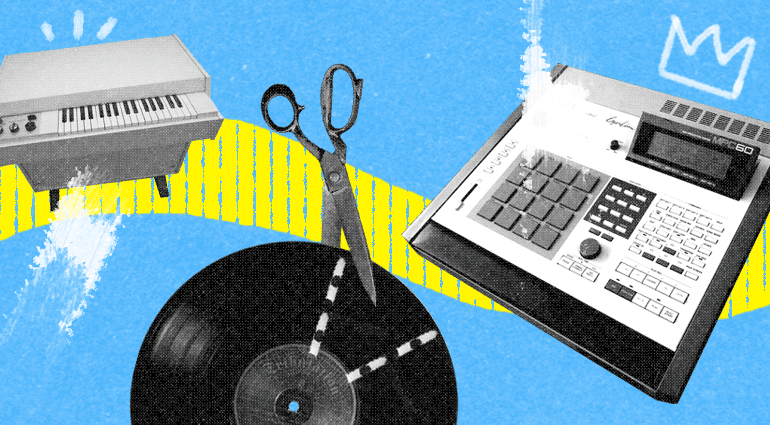
Sampling: Where did this art form originate? How did it develop and what events helped it become what it is today? Is sampling somebody else’s work an ethical practice? We will cover all of these points in the follow “mini history lesson” about the art of sampling in music…
Jazzman’s Inside Joke (early 1900s)

In the early 20th century, in New Orleans and beyond, jazz musicians often “sampled” little bits of melodies, hooks, licks or progressions from their peers’ compositions in their live performances. This was, of course, done out of respect and admiration for the composer as a sort of homage. This “borrowing” of bits of music became a popular practice and kind of an “inside joke” between the musicians. It was a “crowd-pleaser” and added more fun to live jazz events.
Musique Concrète (1940s)
Led by French composer Pierre Schaeffer, this genre of music was more like sound art, or “a study of sound”, and used pre-recorded samples which were then manipulated (looped, pitch-shifted, sped-up or slowed-down, repurposed, etc). This was made possible and highly accessible by the invention of the tape recorder, which gave virtually anybody free rein to manipulate recorded sounds and use them as a means of expression. Needless to say, a very important step in the history of sampling. This mini documentary explains the genre of musique concrète very well…
You are currently viewing a placeholder content from YouTube. To access the actual content, click the button below. Please note that doing so will share data with third-party providers.
The Chamberlin (1949-56)
This instrument, invented and developed by Harry Chamberlin, was the precursor of the better-known Mellotron. It was an electro-mechanical keyboard which triggered tape-loops of many different pre-recorded instruments. There was a very limited amount of them made due to high production costs. These days they are rare collectors’ items and worth a pretty penny. Watch this demo:
You are currently viewing a placeholder content from YouTube. To access the actual content, click the button below. Please note that doing so will share data with third-party providers.
The Mellotron (1960-70s)
Bill Fransen, an investor, decided to take production of the Chamberlin to the next level by shipping two of them to the UK in 1962 where he made a deal with Bradmatic, Ltd. (later Streetly Electronics) to mass-produce them under a new name: Mellotron. They started by manufacturing the Mark I Mellotron, a clone of the Chamberlin. This later evolved into the Mellotron M400 and in 2007 the M4000. A digital version called the M4000D, with digitised tape loops, is also available. You can find it in the Thomann shop HERE.
For an in-depth look at how the Mellotron M400 works, check out this video:
You are currently viewing a placeholder content from YouTube. To access the actual content, click the button below. Please note that doing so will share data with third-party providers.
Hip Hop (1970s & ’80s)
DJs from South-Bronx (NYC) took a totally different approach when it came to sampling. They would create their samples live with skilful vinyl manipulation instead of using actual isolated samples. This revolutionised the hip-hop style and culture. Break beats were most commonly sampled and looped because they provided a momentous base for rapping and for dancing. This video highlights numerous sample based songs which sprouted from this revolutionary phenomenon in The Bronx…
You are currently viewing a placeholder content from Vimeo. To access the actual content, click the button below. Please note that doing so will share data with third-party providers.
First Studio Digital Samplers (1970 & ’80s)
In 1976 the first monophonic digital sampler, called the Computer Music Melodian was invented by Harry Mendel. It was soon purchased by the prolific Stevie Wonder and used on his 1979 album “Journey Through The Secret Life of Plants”. In 1979 the Fairlight CMI (short for Computer Musical Instrument), was invented by Peter Fogel and Kim Ryrie. This machine was way ahead of its time because not only was it polyphonic but it was also a digital synthesiser and a digital audio workstation (DAW) built into one unit. It also featured a “touch screen” which was controlled with a light pen. It goes without saying that this machine blew people’s minds, was purchased by the biggest stars of the ’70s and ’80s (it was not affordable for the average musician), and was the dawn of that characteristic ’80s sound we all know.
- Computer Music Melodian
- Fairlight CMI
Portable Digital Samplers (1980s to present)
- Akai MPC60
Portable digital samplers started being invented in the 1980s and this (r)evolutionary step greatly increased the accessibility of sampling. What once required specialised skilful hands or heavy machinery was now available in the form of a (relatively affordable) compact box sometimes attached to a keyboard controller. This caused a boom in the production of electronic and sample-based music worldwide, extending far beyond its origins in The Bronx. The Akai MPC series samplers (especially the MPC60) and the E-MU SP-1200 played a major role in the production of countless hip hop records, allowing musicians and producers to create full songs without a studio. One of the first professional-grade digital samplers was the Akai S-900. Here is the original (and hilarious) VHS video of the S-900’s user’s manual:
You are currently viewing a placeholder content from YouTube. To access the actual content, click the button below. Please note that doing so will share data with third-party providers.
Copyright Infringement?
A lot of copyright debates and lawsuits spawned from the explosion of sampling in the 1980s and 90s. One of the most famous of these cases was regarding The Verve‘s Bittersweet Symphony in which they sampled an orchestra melody line from the Rolling Stones song The Last Time. The sample was not even from the studio version of this song but rather from an obscure orchestral reinterpretation of the song composed by the Andrew Oldham Orchestra. The story gets even messier when we listen to the song that inspired The Last Time, a traditional song This May Be The Last Time which The Staple Singers recorded 8 years prior. They were never even mentioned in the credits and didn’t receive a penny in royalties. In the end the Rolling Stones’ publisher Allen Klein fought to get The Stones 100% in royalties, and The Verve got nothing for their work of art. The full story is explained in this video…
You are currently viewing a placeholder content from YouTube. To access the actual content, click the button below. Please note that doing so will share data with third-party providers.
Sampling Today & Beyond
We have come a long way in the world of sampling. Some may argue that today’s DJs are less skilled with their hands when it comes to sampling, looping and modifying sounds in the live setting. Technology has definitely made the processes a bit easier but has also raised the bar much higher when it comes to creativity and innovation. The possibilities are endless and evolving while the popularity of sampling constantly increases: the majority of commercially successful pop songs today contain samples (with the rights bought for hefty amounts of money).
The samplers of today can be connected and/or controlled with laptops and smartphones (some are strictly software/DAW based) and will continue to take sample-based music to unconceivable places. How exciting!!
- Roland SP-404A
- Korg Volca Sample
- Arturia V-Collection V6
- Native Instruments Maschine MK3
- Akai MPC X
We hope you enjoyed this mini history lesson. Please write us what you know about the world of sampling in the comments below or on the Facebook post. We’re sure we missed many facts about this complex and ever-evolving movement in music. We’d love to read what you know!
10 comments
Leave a Reply
You are currently viewing a placeholder content from Facebook. To access the actual content, click the button below. Please note that doing so will share data with third-party providers.
More InformationYou are currently viewing a placeholder content from Instagram. To access the actual content, click the button below. Please note that doing so will share data with third-party providers.
More InformationYou are currently viewing a placeholder content from X. To access the actual content, click the button below. Please note that doing so will share data with third-party providers.
More Information
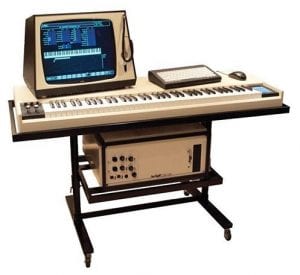

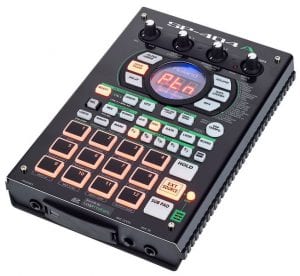





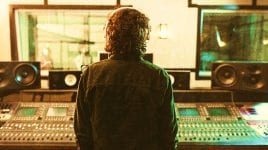
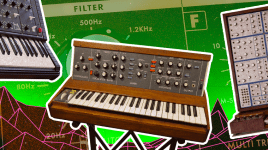
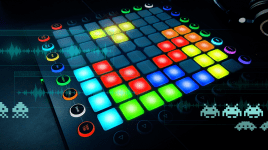
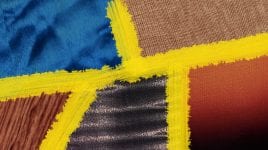

Daniel Åsbjørnsson says:
I feel that “My Life in the Bush of Ghosts” deserves a mention. This first collaborative album by Brian Eno and David Byrne saw them using recordings of – amongst others – television preachers, exorcists and ethnic music as the “vocals” for their songs.
Joe says:
Very true! Thanks so much, Daniel, for reminding me of this masterpiece! A must-listen for anyone interested in sampling.
Frederik Löwen says:
Agree about Eno/Byrne, and how it initiated the vast use of film/TV samples of voices used especially in industrial music – all the way up to Skinny Puppy having to withdraw the track “Left Hand Shake” even though T.Leary himself authorized the use of his voice.
Joe says:
Oh wow, so interesting, Frederik. Thanks for sharing.
Organfairy says:
What about the Optigan? It used sound samples stored on optical discs the size of an LP record. Mattel made them in the early 1970s.
Joe says:
> Wow! Thanks, Organfairy, for the suggestion. This machine is incredible!
João Gomes says:
What about the 1969 EMS Musys (https://www.historyofinformation.com/detail.php?id=2332)? I was quite surprised to learn about this too…
Taylor says:
At the same time as hip hop artists in the 70’s, Throbbing Gristle; a band of some punks from the UK, we’re tying together tape recorders and making music from sounds they’d recorded. Their front, Genesis P-Orridge, was also lead for Psychic Tv later on and is taught about in womens studies courses for being one of the first genderfluid/ non binary people in the public sphere. Wildly interesting person, and they deserve a little credit for coming up with their style of sampling & practically inventing Industrial music
musicL1stener says:
this is an awesome recommendation, thanks for sharing 🙂
shellby valerio says:
amapece kills stobes know